In this article
Looking back at what we’ve built in the first half of 2025, one thing stands out: the relentless pace of progress. From major module overhauls to entirely new workflow types, we’ve shipped more new capabilities than other companies deploy in a full year. That’s exactly the point, and it’s what makes DOSS fundamentally different.
Built for Speed, Designed for Change
We started DOSS with a simple but ambitious mission: rebuild 50 years of legacy ERP software from the ground up to unlock agility for the next generation of companies. The result is the first Adaptive Resource Platform (ARP) – software that moves as fast as your business does.
Traditional ERPs rely on a locked-down and hardcoded data model. This means that even minor changes in your business process require tech teams to write custom code in the backend (or even worse, pay consultants to do it).
DOSS ARP works exactly the opposite: it’s built on a hybrid database architecture with a modular application layer that’s designed to adapt to your actual business needs. The key is moving schema control to the application layer, which allows customers to create and modify tables, workflows, and integrations instantly with no code and no downtime.
This structural advantage isn’t just about convenience. It’s what makes every feature we build exponentially faster, more powerful, and more flexible than what you’ll find in other ERPs.
H1 Product Update Summary
The first half of 2025 has been defined by four key areas of innovation that showcase this speed and flexibility in action:
- Modules 2.0: Full overhaul of Inventory, Demand Planning, and Finance & Accounting (Fin/Acc)
- Integrations: Seamless connections that sync data across your entire tech stack
- Enhanced Features: New capabilities that make daily operations smoother
- Workflows 2.0: File parsing and AI-powered automations to turbocharge operations
Let's dive into what we've built and how it's already transforming real-world operations.
Modules 2.0: Building Blocks for Modern Operations
Think of modules as the foundation of DOSS ARP: composable tables can be mixed and matched across various categories including inventory, orders, warehouses, finance, procurement, CRM, project management, production, and demand planning. Once set up, they automatically feed into workflows that keep your supply chain humming.
We’re constantly tweaking modules as we customize setups for each customer, but three modules got a serious makeover this year.
Demand Planning
Demand planning helps businesses optimize forecasting of inventory and sales to avoid stockouts and ensure they have the right products available when customers need them.
Most businesses know they need demand planning, but the execution involves way too many spreadsheets and guesswork. We’ve simplified it into a three-step process that actually works:
- Build the model: Start with granular forecasting, typically at the SKU level broken down by month or week. Upload a CSV forecast or let us apply growth rates to your historical data. Your choice.
- Generate a demand + supply plan: Define your model, set your weeks on hand (WOH) thresholds, and DOSS automatically calculates optimal reorder points and triggers for new purchase orders (POs) to optimize inventory allocation.
- Automate everything else: The committed forecast kicks off a cascade of automated workflows: SKU reordering, phased lead time management, inventory adjustments, and PO generation (all without manual intervention).
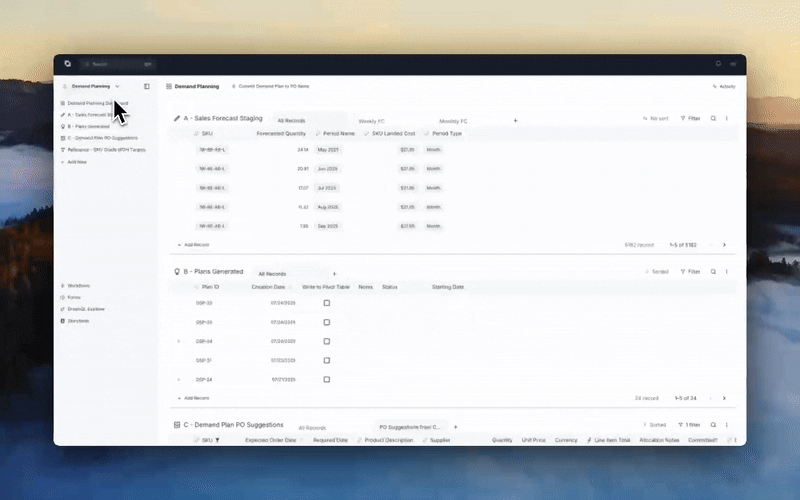
Inventory Management
Every supply chain operation lives or dies by inventory management: knowing what you have, where it is, and how it moves through your business. Sounds simple, but anyone who’s dealt with it knows it’s not.
Our Inventory Management module gives you real-time visibility across all locations, measuring everything from COGS to committed stock, on-hand inventory, and in-transit items. When combined workflows, you can also automate PO creation and inventory ledger updates based on key operational events.
We just added two new capabilities that customers have been asking for:
- We enhanced lot tracking with true serialization to make it easier to track individual items throughout your supply chain by PO, receipt date, expiration date, and location.
- Audit-ready records provide an end-to-end trail of all physical inventory movements.
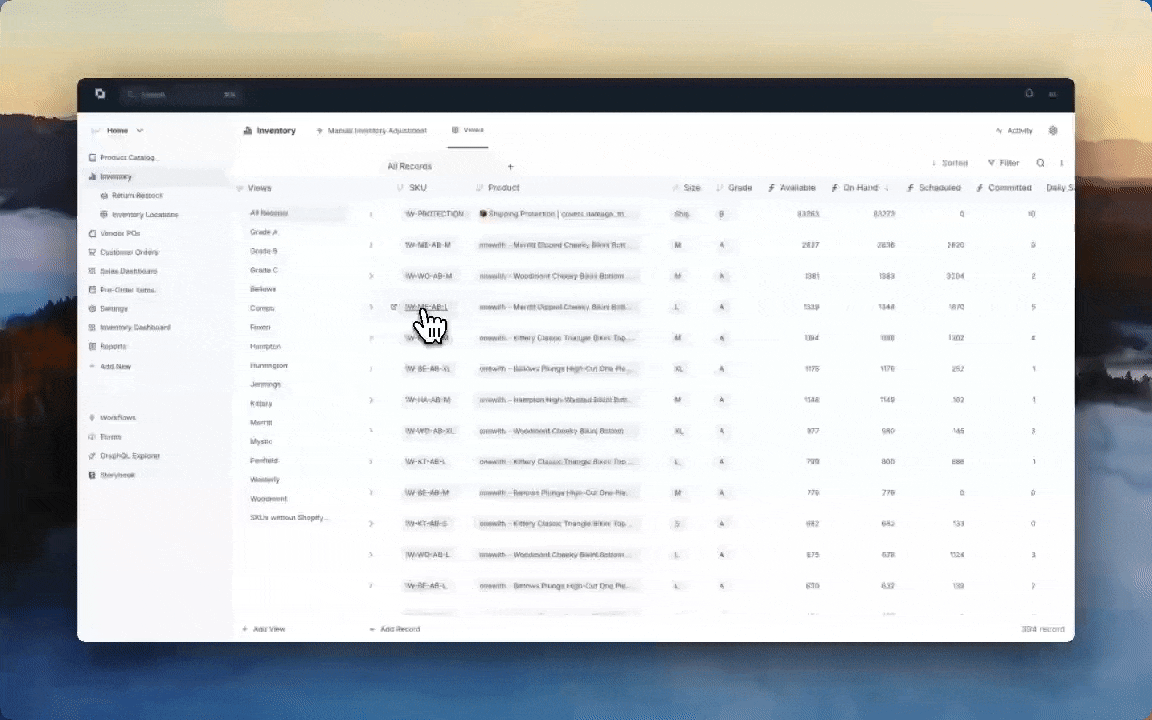
Finance & Accounting
While our Quickbooks integration is fine for standard FP&A, we’ve just built something much more powerful: a complete, in-house General Ledger (GL) that brings everything together.
Our Finance & Accounting module handles multi-entity businesses within a single platform. Whether you’re running multiple subsidiaries, divisions, or legal entities, you get unified financial visibility without the usual headaches of managing separate systems.
We’ve also added Ramp alongside our whitelabeled Bill integration, transforming your entire vendor payment and procurement processes. Itemized expenses automatically flow from Ramp into your GL, while Bill streamlines your procure-to-pay cycle.
Combined with our new 3-way matching system (procure → receive → pay), you get end-to-end financial automation that eliminates manual data entry and reduces errors.
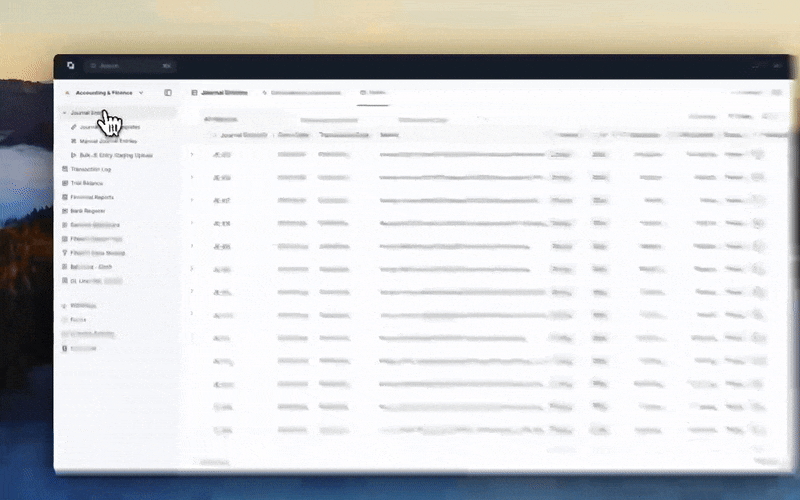
Integrations: Your Connected Supply Chain
Your business runs on a variety of tools, and the last thing you need is to wait months for custom integrations or be locked into an ERP that promises “unified” but still leaves you juggling disconnected systems. The true power of your ERP isn’t just what it can do by itself, but how easily and thoroughly it connects with the rest of your tech stack.
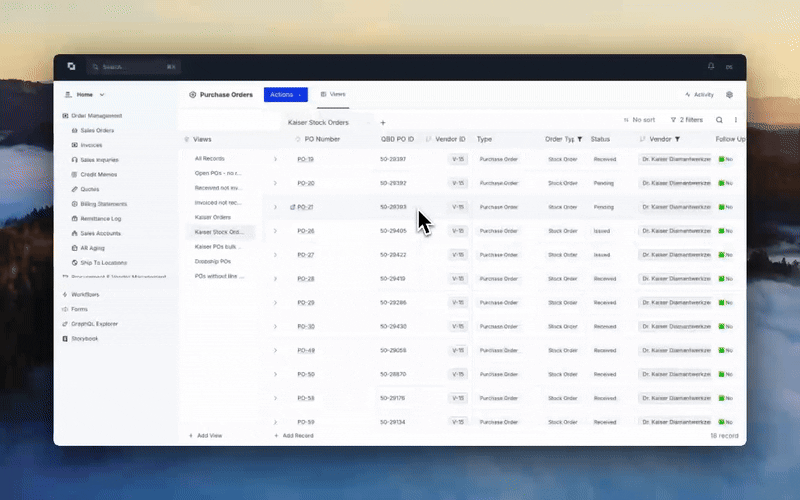
That’s why we’ve rapidly expanded our integration ecosystem across these categories:
- EDI Integrations: Direct order and inventory management (SPS, Crstl, etc.)
- 3PL Integrations: Real-time inventory and fulfillment sync across logistics partners (Extensiv, CH Robinson, Manhattan, Blue Cherry, etc.)
- Selling Channels: Unified order management (Amazon, Shopify, Walmart, Faire, etc.)
- Banking & Payments: Automated financial data and expense management (Ramp, Bill)
- Data Warehouse: Enterprise-grade analytics and reporting capabilities (Snowflake)
From that list, there’s one callout that goes way beyond basic ERP capabilities: Amazon.
Amazon: Comprehensive Order Management
Most ERPs claim “Amazon integration,” but it’s just surface-level order sync. You still have to log into Amazon Seller Central for FBM (Fulfilled by Merchant), FBA (Fulfilled by Amazon), AWD (Amazon Warehousing & Distribution), MFC (Multi-Channel Fulfillment), removals management, and more. That's not integration; that's data copying.
Our expanded Amazon integration covers the entire fulfillment ecosystem, so you can trigger any action from DOSS without ever leaving the platform. Initiate shipments, manage removals, handle transfers, or pull itemized reports with unified control that you won’t find elsewhere.
Other Features: Streamlining Real-World Operations
Beyond module and integration updates, we’ve shipped several other features that enhance your overall operations with speed, accessibility, and ease-of-use.
Platform & Access: Secure, Global, Mobile
Role-Based Access Control (RBAC) gives you granular control over who can see and do what in your system. Set permissions by role, department, or individual user. Sensitive financial data stays with finance, while other teams get the operational access they need.
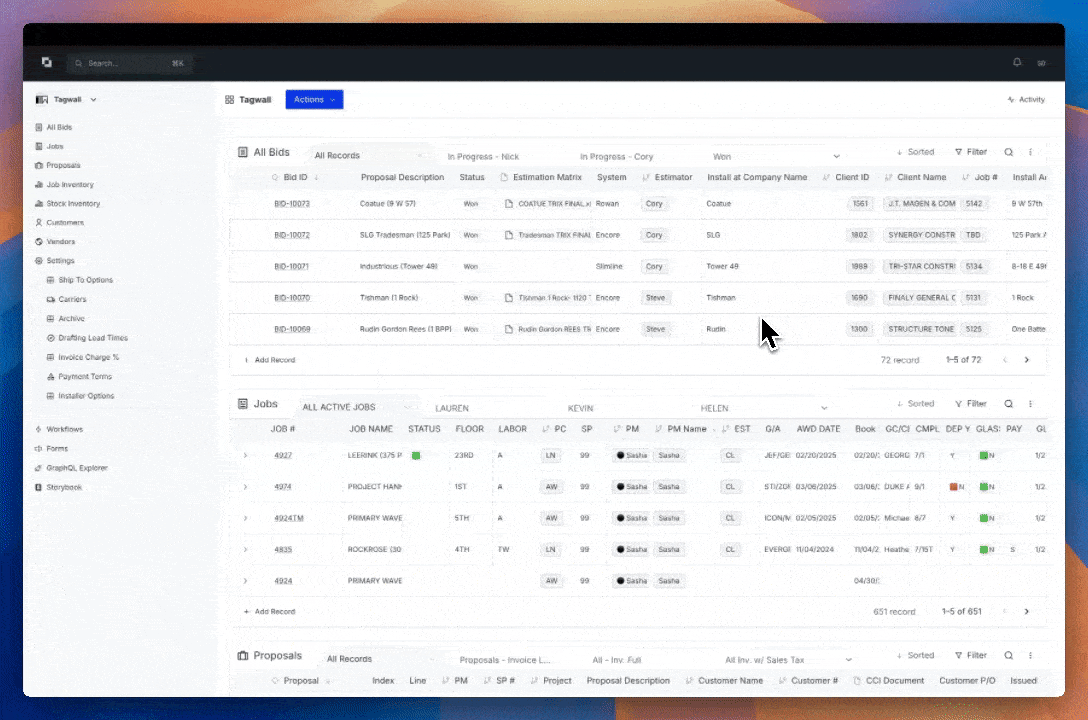
Internationalization breaks down language barriers with auto-translation capabilities that include Hebrew and other right-to-left languages. Toggle between languages directly within the DOSS platform for full data consistency across all global views.
DOSS Mobile App puts your entire operations in your pocket with full read-write functionality. Check inventory, approve POs, scan bar codes, or review reports from anywhere. As we continue enhancing mobile UX, you’ll never be stuck waiting to get back to your desk.
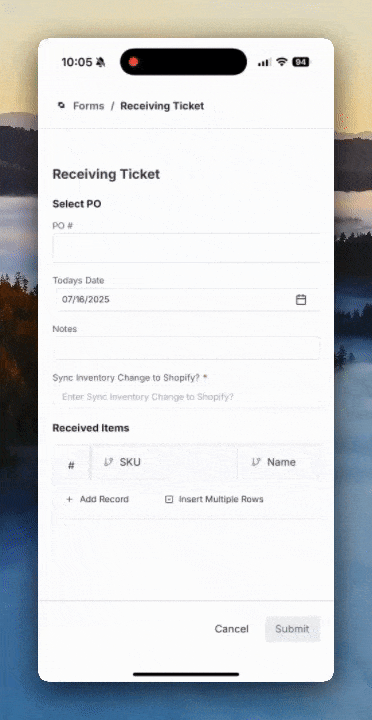
Productivity: Work Smarter, Not Harder
eSign integration eliminates the endless email chains and manual signature chasing. Contracts, POs, and vendor agreements flow seamlessly through your approval workflows with integrated digital signatures. No more printing, scanning, or waiting for wet signatures.
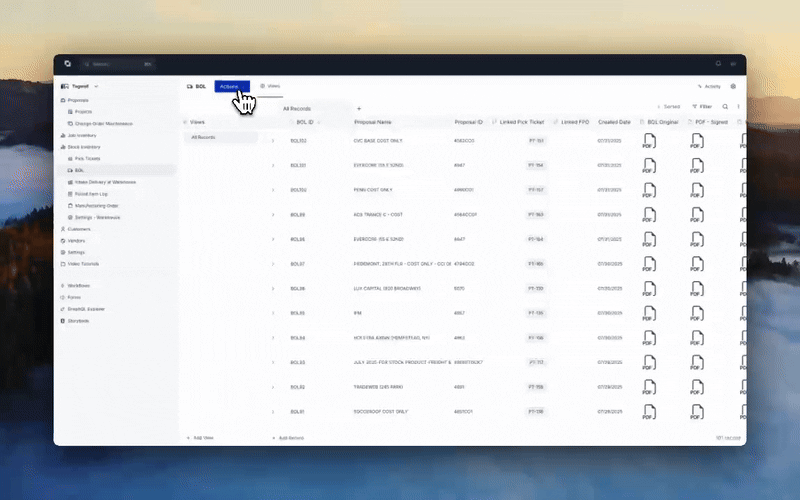
Pivot Tables bring Excel-like analytical power directly into DOSS DataStudio. Slice and dice your operational data with familiar pivot table functionality, but with the advantage of real-time data that’s always current and never leaves you waiting on endless BI tool loading bars.
Looking Forward: Advancing Engineering & Workflows 2.0
From revamped modules and integrations to productivity tools, we’re building better ways to run operations at the pace your business demands. Behind the scenes, we’ve also made engineering improvements to optimize the speed and stability that make DOSS fundamentally different from the slow, legacy ERPs that bog down so many teams.
On top of this, we’ve been laying the groundwork for Workflows 2.0, with file parsing and AI-powered workflow steps already live and delivering automation wins for our customers. The full 2.0 release is coming soon, bringing even more intelligent automation that will handle complex operational tasks without human intervention.


